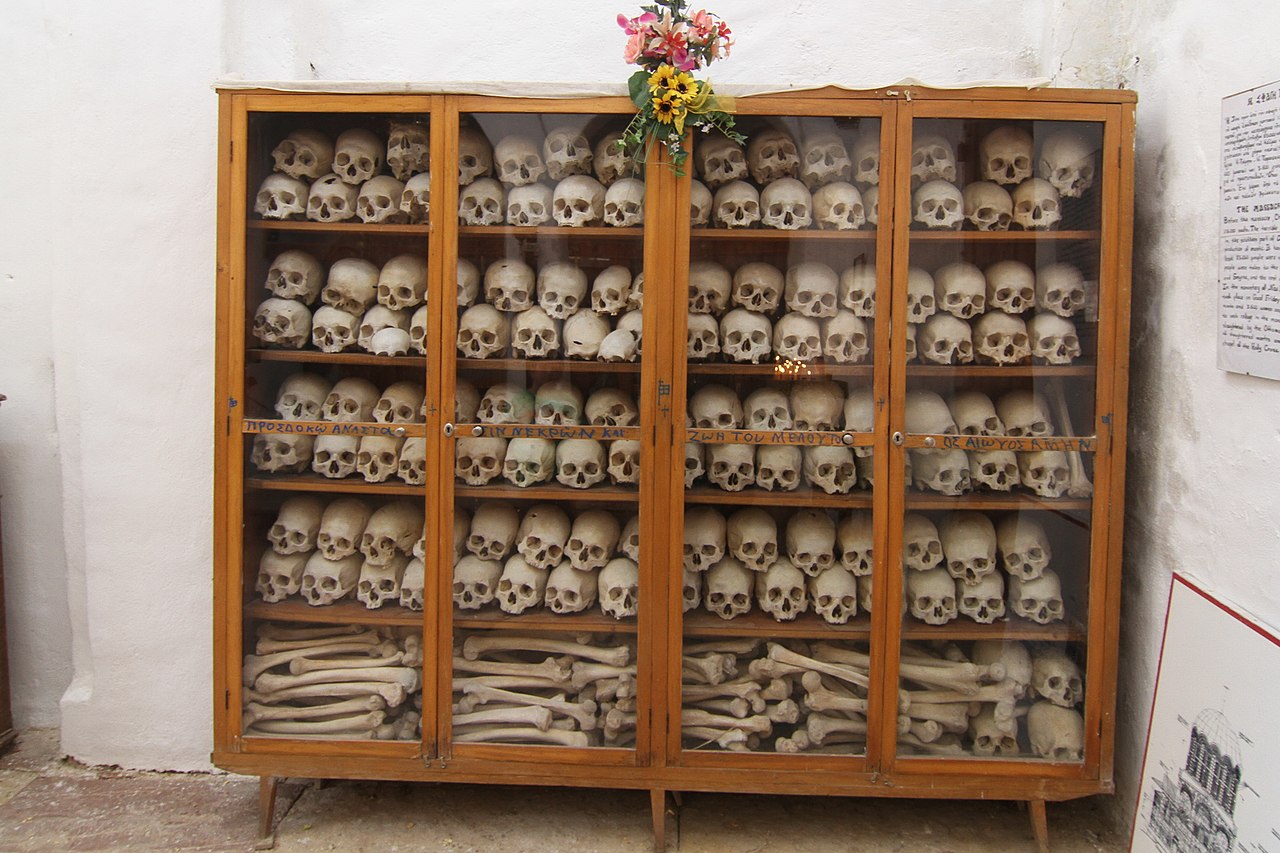The Massacre at Chios (1824) by Eugène Delacroix
The Chios Massacre refers to the slaughter of tens of thousands of Greeks on the island of Chios by Ottoman troops during the Greek War of Independence in 1822.
Greeks from neighbouring islands arrived on Chios and encouraged the
Chians to join the struggle for independence. In response, Ottoman
troops landed on the island and slaughtered thousands. The massacre
provoked international outrage, and led to an increasing support for the
Greek cause worldwide.
For over 2,000 years, Chios merchants and shipowners had been prominent in trade and diplomacy throughout the Black Sea, the Aegean, and the Mediterranean. The Ottoman Empire allowed Chios almost complete control over its own affairs as Chian trade and the very highly-valued mastic plant harvested only on Chios were of great value to it. The cosmopolitan Chians were also very prominent in Constantinople. Following the massacre, however, the island never regained its commercial prominence.
Historians have noted that the island's ruling classes were reluctant to join the Greek revolt,
fearing the loss of their security and prosperity. Furthermore, they
were aware that they were situated far too close to the Turkish
heartland in Asia Minor to be safe. At some points, Chios is only 2
miles (3.2 km) from the Anatolian mainland.
In March 1822, as the Greek revolt gathered strength on the mainland,
several hundred armed Greeks from the neighbouring island of Samos landed in Chios. They attacked the Turks, who retreated to the citadel. Many islanders also decided to join the revolution.
However, the vast majority of the population had by all accounts done
nothing to provoke the reprisals, and had not joined other Greeks in
their revolt against the Ottoman Empire.
Reinforcements in the form of a Turkish fleet under the Kapudan Pasha Nasuhzade Ali Pasha arrived on the island on 22 March. They quickly pillaged and looted the town. On 12 April [O.S.
31 March], orders were given to burn down the town, and over the next
four months, an estimated 40,000 Turkish troops arrived. In addition to
setting fires, the troops were ordered to kill all infants under three
years old, all males 12 years and older, and all females 40 and older,
except those willing to convert to Islam.
Approximately three-quarters of the population of 120,000 were killed, enslaved or died of disease.
It is estimated that 2,000 people remained on the island after 21,000
managed to flee, 52,000 were enslaved and 52,000 massacred. Tens of thousands of survivors dispersed throughout Europe and became part of the Chioten Diaspora. Another source says that approximately 20,000 Chiotes were killed or starved to death. Some young Greeks enslaved during the massacre were adopted
by wealthy Ottomans and converted to Islam. Some rose to levels of
prominence in the Ottoman Empire, such as Georgios Stravelakis (later
renamed Mustapha Khaznadar) and Ibrahim Edhem Pasha.
There was outrage when the events were reported in Europe. French painter Eugène Delacroix created a painting depicting the events that occurred; his painting was named Scenes from the Massacres of Chios.
In 2009, a copy of the painting was displayed in the local Byzantine
museum on Chios, but was withdrawn from the museum on November 2009.
While the withdrawal was meant to be a "good faith initiative" for the
improvement of Greek-Turkish relations, the Greek press protested its removal.
Human skeletal remains of the massacre in Nea Moni of Chios
in Wikipédia




Sem comentários:
Enviar um comentário